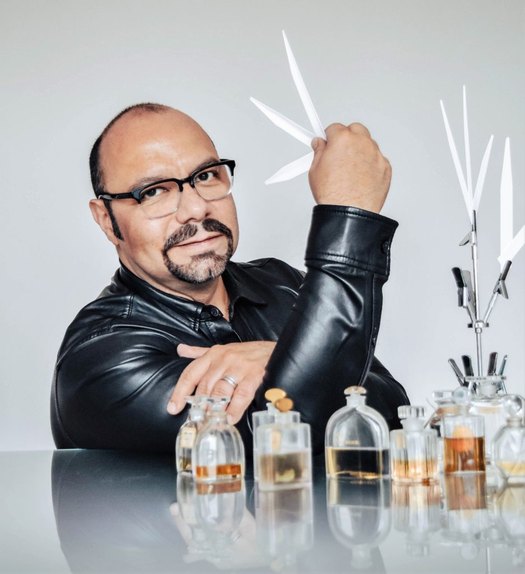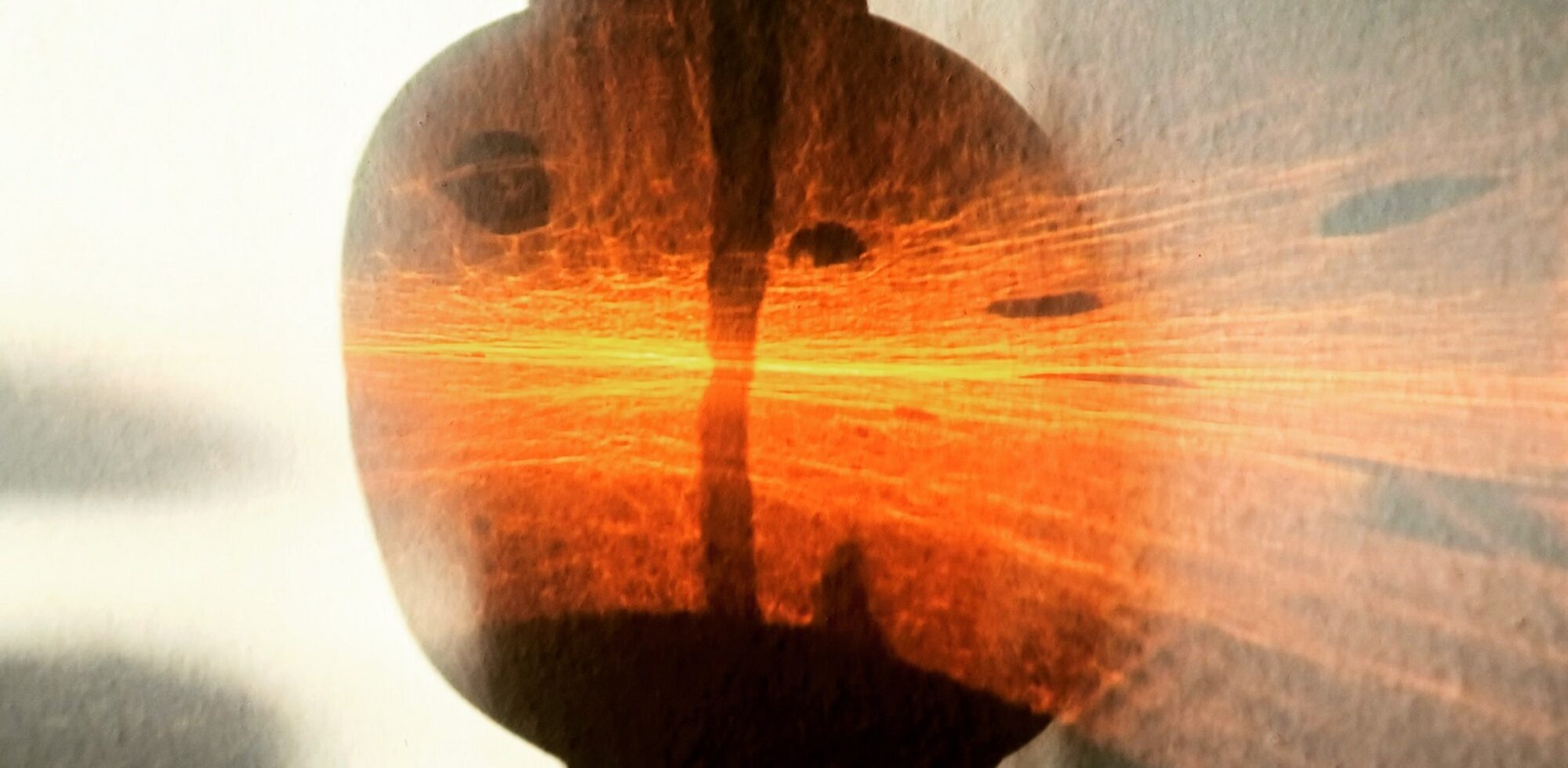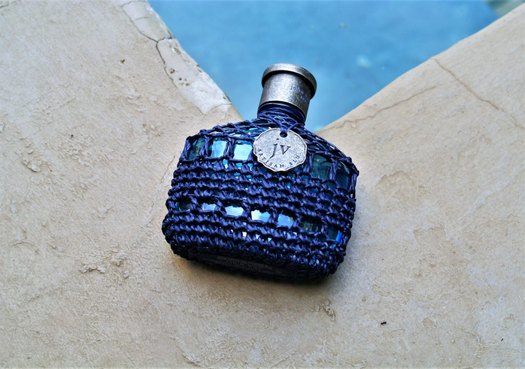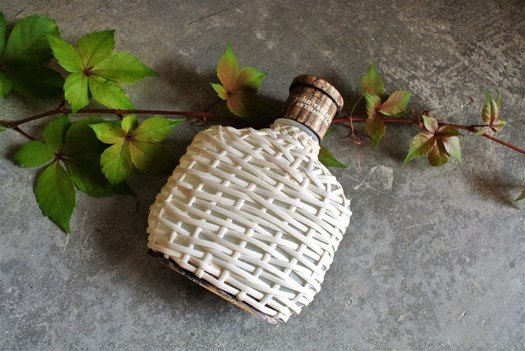
I’ve been thrilled to interview several perfumers since the launch of my blog in 2016. Most of these have been email interviews, though. So I was particularly excited when I got the opportunity to chat on the phone with Mexican-born perfumer Rodrigo Flores-Roux.
My first introduction to a Rodrigo-Flores Roux fragrance was the perfectly named Clinique Happy EDT, although I didn’t know at the time it was one of his creations. More recently, I’ve loved his fragrances for the American designer John Varvatos.
These above-mentioned fragrances only touch the surface of the variety of fragrances Rodrigo Flores-Roux has created over the past two decades. A squiz at the list below will tell you why he’s so well regarded in the industry:
- Donna Karan Black Cashmere EDP (2002)
- Dolce & Gabbana Velvet Vetiver EDP (2011)
- Tom Ford Neroli Portofino EDP (2011)
- Arquiste Anima Dulcis EDP (2014)
- Aedes de Venustas Oeillet Bengale EDP (2014)
- Commodity Leather EDP (2017)
- Elizabeth Arden White Tea EDT (2017)
- Frassai A Fuego Lento EDP (2018)
Rodrigo Flores-Roux called me from the New York studio of Givaudan, the fragrance company where he holds the position of senior creative perfumer/vice-president perfumery. From the short time we spoke together, his passion for his work was unmistakable, and his strong Mexican accent just added to his charm.
Do you remember any fragrances from your childhood?
Yes, many. There were lots of conversations around perfume. My mother adored very sophisticated, very French perfumes such as Lancôme Magie Noire. My grandmothers wore Lanvin and Caron perfumes.
You studied at ISIPCA and had an internship with Jean-Claude Ellena. What did you gain most from that experience?
He taught me many things, which I still apply to my work today. For example, he taught to formulate in such a way that every single raw material has a function, even though he’s a minimalist and I am not.
Apart from smart formulation, he also taught me that the most important sense in perfumery is not just smell – it’s hearing and listening.
“Jean Claude-Ellena taught me that the most important sense in perfumery is not just smell – it’s hearing and listening.”
What was the first fragrance you created? What do you think about it now?
In the international sphere, I was fortunate to have co-created Clinique Happy with Jean-Claude Delville. That fragrance is now a historical, classic reference. We were onto something there, experimenting with new fruity, citrus, spicy, floral notes. It’s emotionally connecting. The name is perfect for the smell. It was launched on June 7 1997, so it just turned 22 years old.
What’s essential when you create a fragrance?
First of all, I want to communicate pleasure and a love of life. There is a place for delicate perfumes, but that’s not my scene. I like them big and bold and to make a statement. Another important thing for me is love. You put so much love into your perfumes so when someone chooses to make them a part of their life because they love your work, that’s the reaction I want.
Tell us about some of the perfume projects you have just finished working on.
I’ve very proud of Aether Suprae. It’s a very short formula and has the biggest dose of a captive material that Givaudan has been playing around with for years – Akigalawood. It comes and goes and has a bit of a presence like a ghost.
I’ve also finished working on White Diamonds En Rouge by Elizabeth Taylor. It’s been chosen by the Elizabeth Taylor Aids Foundation to help raise funds and awareness. In the year of the anniversary of the Stonewall riots, I am very happy to be helping a cause that has touched the gay community so much. It’s an unusual perfume and I put a lot of love into it.
You’ve created most of the John Varvatos fragrances. I have several of them in my collection. Why do you enjoy working on this brand so much?
Thank you. Apart from the Nick Jonas collaborations, there have been 15 fragrances in 15 years. Not bad for a record. John and I click together. Some of the fragrances are now considered classics, such as the original, and Artisan celebrated its 10th anniversary this year, which is very cool.
I especially enjoy John Varvatos Dark Rebel and Dark Rebel Rider.
Those perfumes were John and I exploring the vision of light and dark together. They are very well liked by connoisseurs. Thank you for that.
Have you ever had to compromise your vision on a fragrance project? How do you deal with that?
I would be lying if I said that I have never compromised. As a perfumer you don’t make a perfume alone. There’s many factors to consider. Number one, what is the client looking for? That’s where listening becomes so important. We’re committed to a mutual success, so then it’s a case of ok, let’s give that a try. Many good things happen like that.
Is there a particular ingredient you don’t like working with?
Anything that’s very sugary, very caramel-y, very gourmand is not exactly my taste. I don’t think I’ve ever used everlasting flower successfully in a fragrance. On the other side, I am very comfortable with citruses and I love florals and leather.
There are some terrible gourmands on the market.
I didn’t use the word “terrible” [laughs]. In Mexico we always say that perfumes are made for different tastes. There are a lot of perfumes that serve a purpose on the market.











While I never wore Clinique Happy myself, I always thought it was an amazing creation.
Tom Ford Private Blend Fleur de Chine is one of my all-time favorites. I also liked J. Crew + Arquiste No. 57 enough to buy a travel spray. And I like – though do not own – Oeillet Bengale and Arquiste Ella.
Glad that you’re familiar with his work, Undina. Fleur de Chine is wonderful.
Comgratulations, a great interview! And I keep track of his work, really interesting!
Big thank you, Elena! Yes, he’s such a talented perfumer.